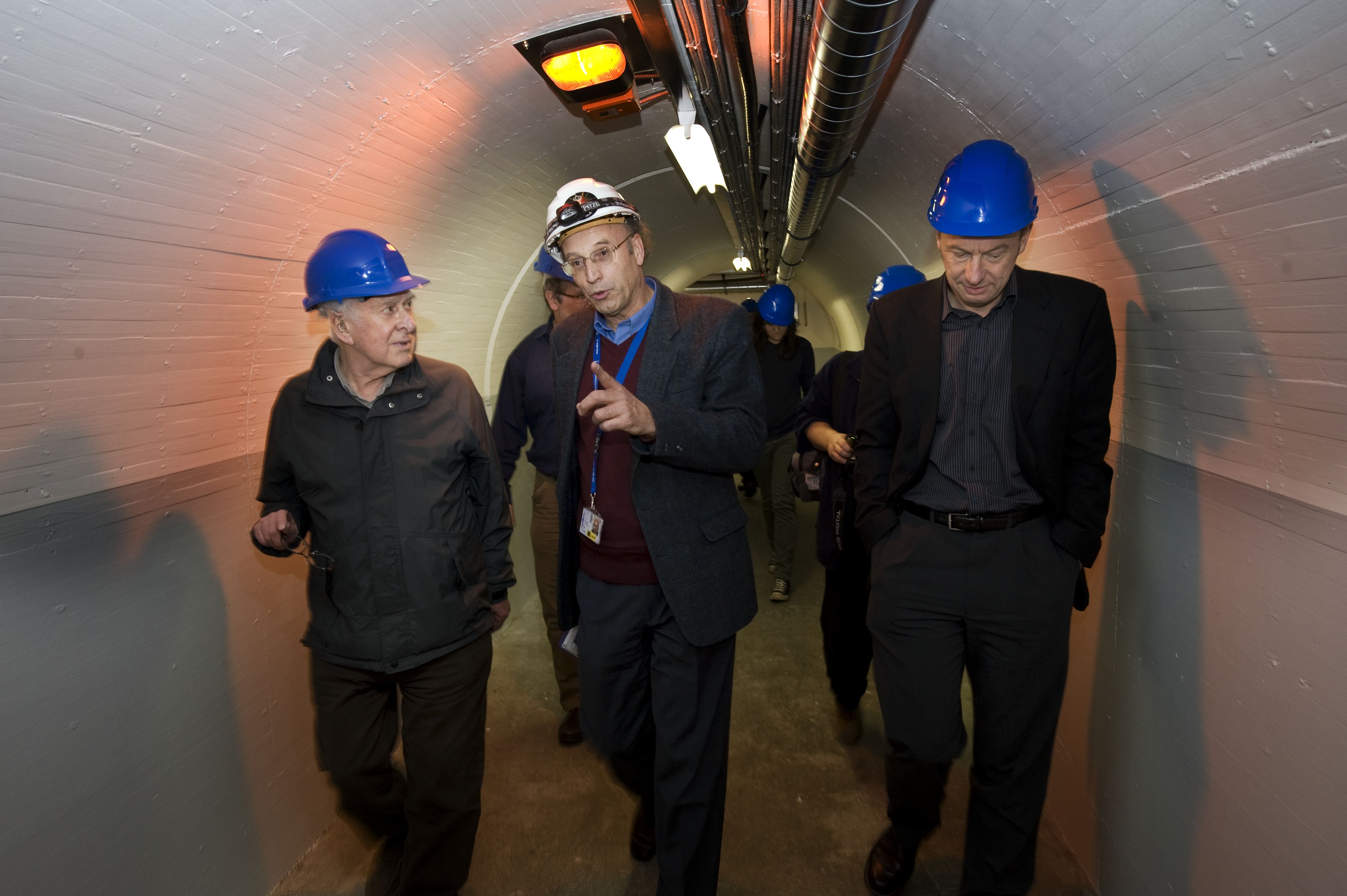CERN: We'll find that Higgs boson even if it takes 4 trillion electronvolts


You could call it the high-energy physics version of racing to meet a deadline.
CERN, the renown Swiss research lab, plans to shut down its famous $9 billion underground Large Hadron Collider for maintenance next year. Unfortunately, the physicists who are searching for the elusive Higgs boson at the Geneva facility need the device to help them in their hunt.
To increase their chances of spotting the enigmatic subatomic particle before the bosses take away their toy, they're cranking up the "beam energy" at the collider to 4 trillion electronvolts (TeV). It's part of "a strategy to optimise LHC running to deliver the maximum possible amount of data in 2012 before the LHC goes into a long shutdown," a recent CERN press release states.
The Higgs boson, postulated by Emeritus Professor Peter Higgs of the University of Edinburgh, is believed to give mass to matter. Physicists have described it as the capstone to Standard Model of physics, which explains electromagnetism and strong and weak nuclear forces. CERN said last December that it's close to discovering it. But researchers say that the LHC experiment could also conclude that the Higgs particle does not exist, which would be equally valuable as CERN approaches put up or shut up time on Higgs.
And darn it if CERN doesn't think that the extra jolt will get them there this year.
"By the time the LHC goes into its first long stop at the end of this year, we will either know that a Higgs particle exists, or have ruled out the existence of a Standard Model Higgs," says Sergio Bertolucci, CERN's research director. "Either would be a major advance in our exploration of nature, bringing us closer to understanding how the fundamental particles acquire their mass, and marking the beginning of a new chapter in particle physics."
Not that they were pussyfooting around before. They've been operating at 3.5 trillion electronvolts. An electronvolt, by the way, is a unit of energy, and is not the same thing as a volt, which is a unit of electric potential. But still, we're talking some serious power consumption.
"When we started operating the LHC for physics in 2010, we chose the lowest safe beam energy consistent with the physics we wanted to," says Steve Myers, CERN's director for accelerators and technology. "Two good years of operational experience with beam and many additional measurements made during 2011 give us the confidence to safely move up a notch and thereby extend the physics reach of the experiments before we go into the LHC's first long shutdown.".
The LHC will power down in November.
If by some chance 4 trillion electronvolts doesn't do the trick, then the Higgs scientists can look forward to an even greater boost. When the LHC re-opens in late 2014, it will operate at at 7 trillion electronvolts, or double its 2010 and 2011 level.
I know what the eco warriors are thinking: At all these trillions of electronovolts, how green is the hunt for Higgs? Tree huggers can rest assure that CERN is doing its part to cut its environmental impact. As we reported here last October, CERN and other labs have been comparing notes on how to save energy on large machines like particle colliders, wind tunnels, cryogenics gear and fusion tokamaks.
We have yet to hear back on any of their plans. But for starters, the two-year shutdown might make a difference in the electric bill.
Photos from CERN.
More high energy on SmartPlanet:
- Light gets rematch vs neutrinos as CERN declares glitch
- Fame! Science and energy hit the bright lights
- Particle of doubt: The Higgs boson and scientific uncertainty
- Neutrinos outrace light again
- CERN’s faster-than-light neutrinos: It’s a do-over
- Slowing down antimatter at CERN
- How to save energy on particle colliders
- Faster-than-light neutrinos come down to earth
- From Britain, new dimensions on the speed of light
- Get ready for time travel
- The practical uses of antimatter
This post was originally published on Smartplanet.com